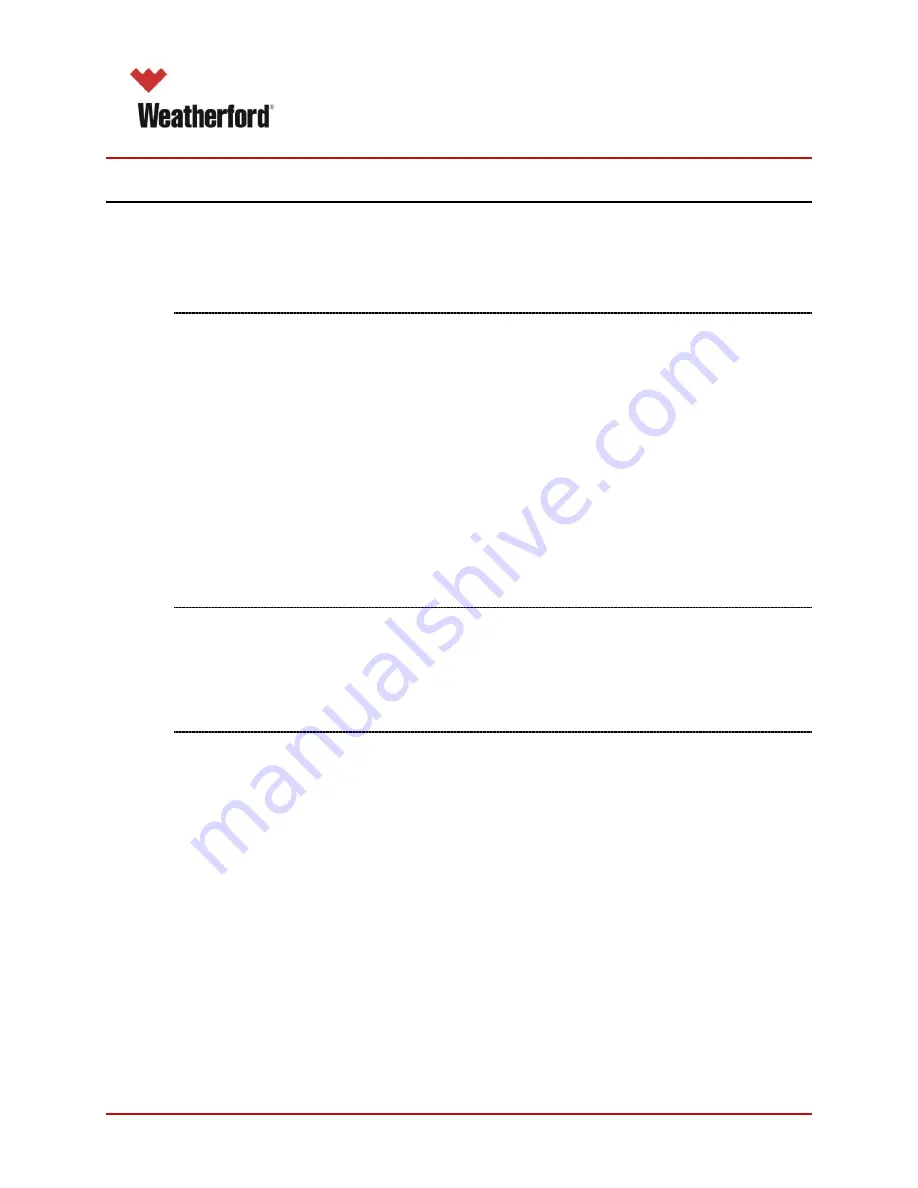
Pump and Fluid Systems
Chapter 5: Assembly/Disassembly
weatherford.com
29
MP-16 2-Piece 5000 psi January 2013
4.3
Lubrication
Regular lubrication of the components is essential for pump longevity. By maintaining a
regular lubrication schedule and using the correct lubricant for the type of service, the life of a
pump can be extended markedly.
4.3.1
Prestart Lubrication
If the pump is idle for an extended period of time, rotate occasionally to avoid corrosion
and prevent flat spots from forming on the rollers and races. Before restarting, the inspection
covers should be removed and oil should be applied directly into the crosshead reservoirs to
ensure immediate lubrication upon startup.
Regardless of the duration of inactivity, all drain plugs should be removed from the
crankcase to allow any moisture or contaminants that have accumulated to be removed prior
to startup. Likewise, any external lubrication pumps should be checked to ensure that it is
operational and that oil is moving through all internal lube lines, and that the spray nozzles
are properly positioned to fill the wrist pin bearing fill cups.
Any liner wash system used should be started before the mud pump to ensure that the
liners are properly sprayed and lubricated in order to prevent damage to the pistons and
liners.
4.3.2
Minimum Operating Speed
For most pumps, a speed of 40 RPM must be maintained in order to ensure proper
lubrication of all components. However, pumps may be operated below this speed if an
auxiliary power end lubrication system is used. Under no circumstances should the pump be
run at speeds below 40 RPM without the use of auxiliary power end lubrication system.
4.3.3
Power End Lubrication Guidelines
During operation, significant loads will be placed on the crankshaft, connecting rods and
crossheads, and so a heavy duty industrial gear lubricant rated for extreme pressure should
be used. Consult the Lubrication chart on page 50 for recommended lubrication based on
ambient temperature. As a minimum (AGMA specification 250.04 oil) which has passed a 60
lb load arm test, should be used.
Check oil level periodically (see 4.4: Maintenance Schedules). The oil level should be
equal to the centerline of the lowest eccentric bearing roller, set so the connecting rod is at its
lowest point during rotation. Oil should always pour freely at the operating temperature, and
should be free of contaminants. The oil in the power end must be changed at minimum once
every six months (2,000 hours of operation), and should be changed as often as necessary to
maintain proper viscosity and keep the oil free of sludge.
Always replace the oil with an approved lubricant. When changing the oil, remove and
clean the breather caps to help ensure pump longevity. When checking the oil level during
operations, always allow the pump to remain idle for five minutes in order to ensure that the
oil level stabilizes.
















































